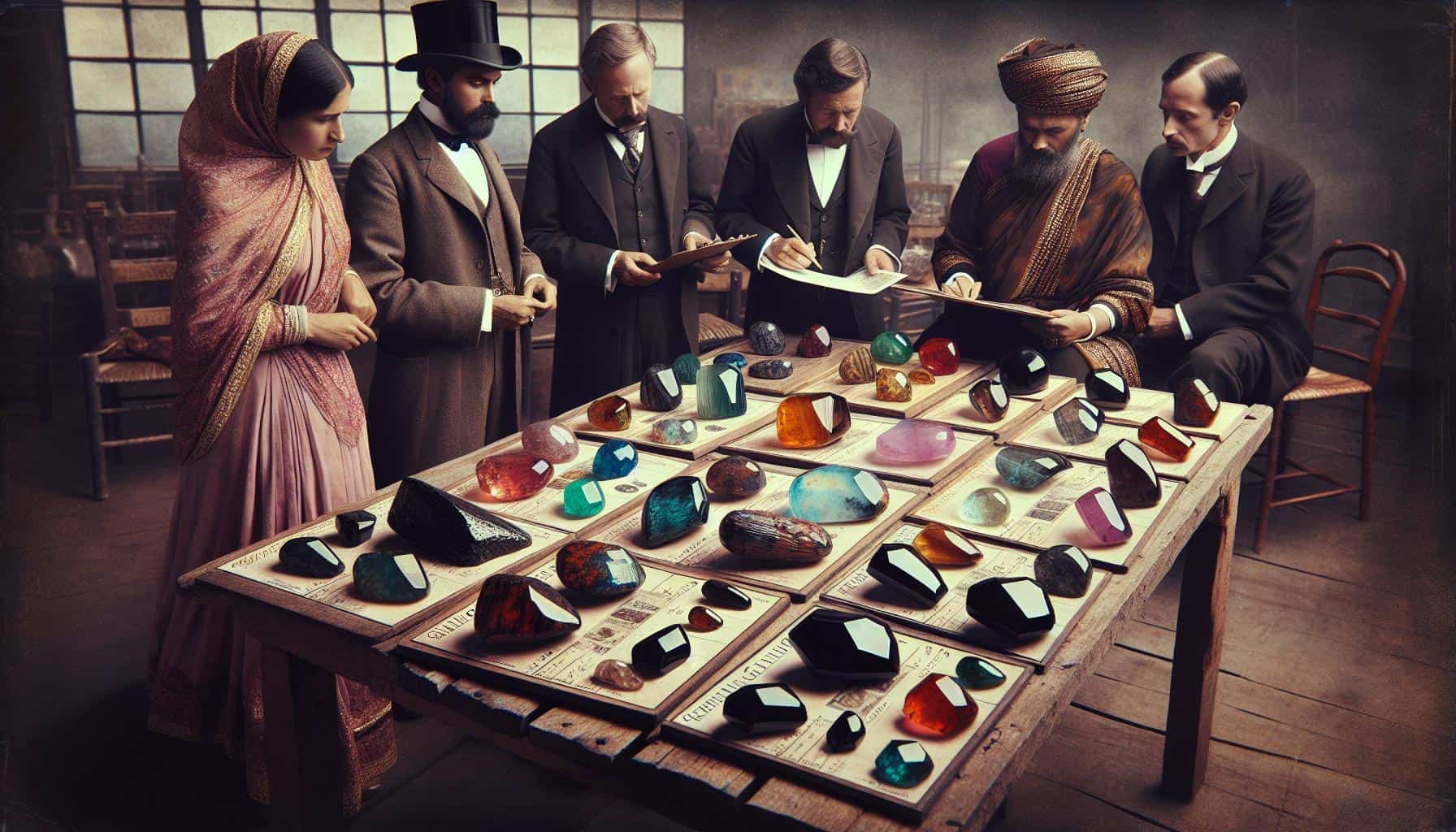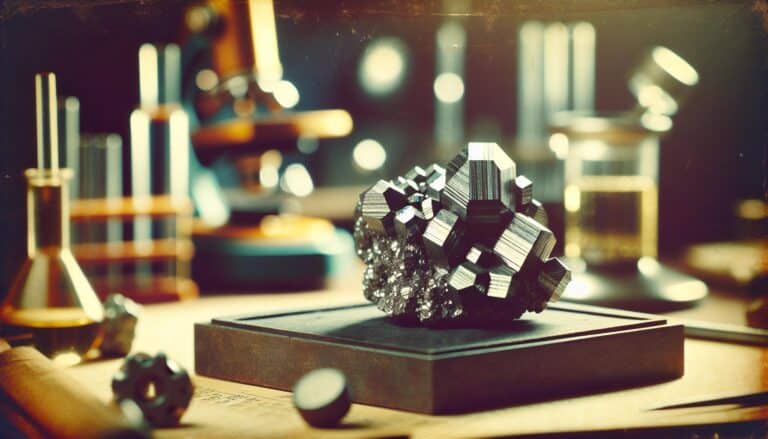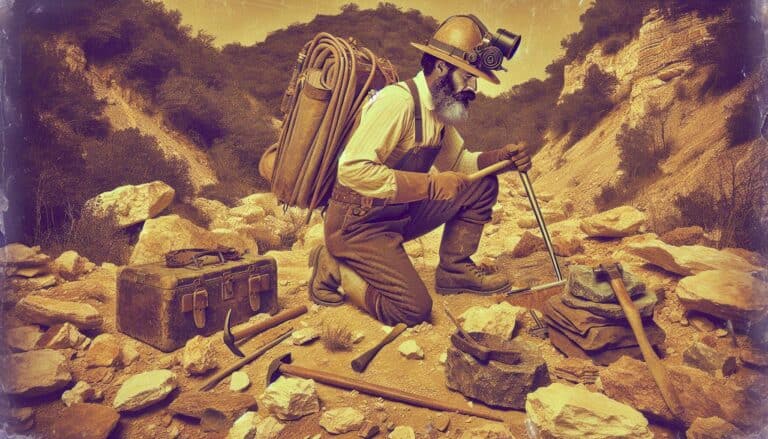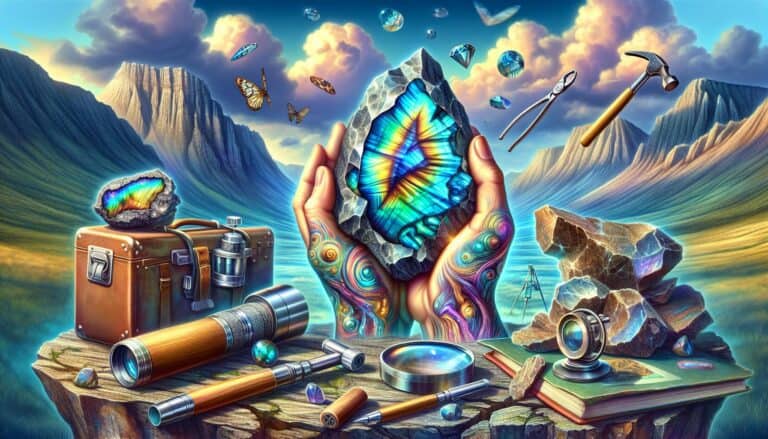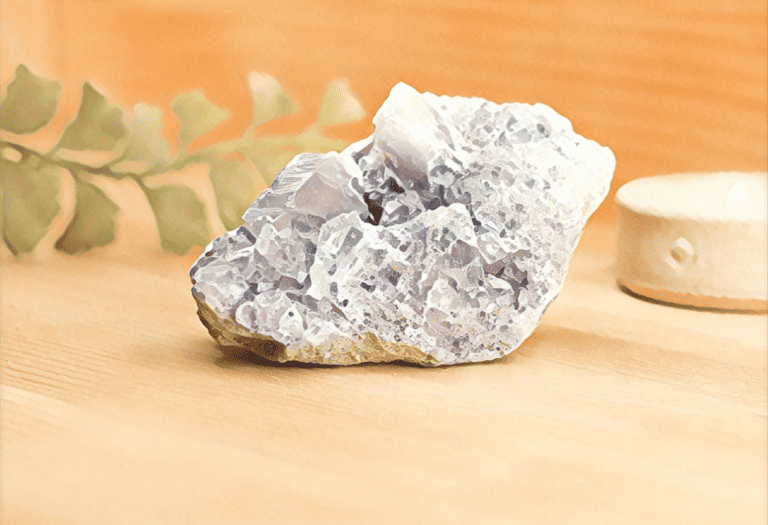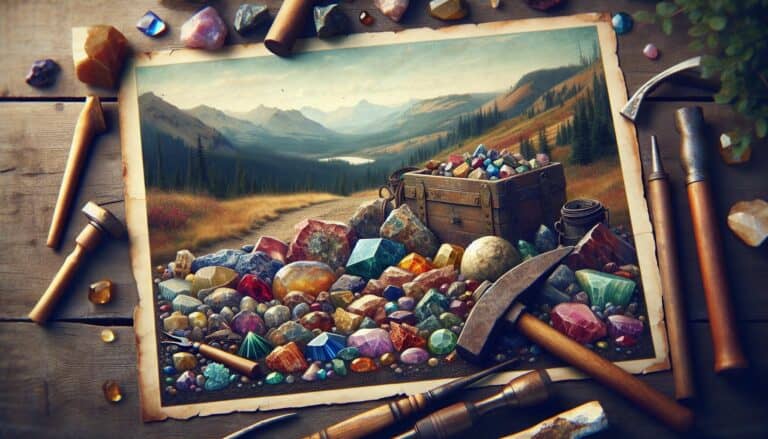You’re probably familiar with obsidian, that glossy volcanic glass that’s as intriguing as it is beautiful.
It’s not just a staple in Minecraft; it’s a real-world gemstone with a value that may surprise you. Whether you’re a collector, a crafter, or simply curious, understanding obsidian’s worth is essential.
Obsidian’s price can vary widely, influenced by factors like color, size, and craftsmanship. From raw chunks to exquisitely carved pieces, there’s a market for this unique material.
Let’s dive into what makes obsidian so special and what you can expect to pay for a piece of this ancient volcanic treasure.
Obsidian value is influenced by color, clarity, and craftsmanship. Common Black Obsidian is more affordable, while rare types like Rainbow or Snowflake Obsidian are valued higher. Prices vary based on rarity, market demand, and quality of craftsmanship. For purchases, ensure authenticity and consider the cultural and historical significance of obsidian.
What Is Obsidian?
When you’re eyeing that lustrous black stone, you’re looking at obsidian, a naturally occurring volcanic glass. Born from rapidly cooling lava, this gemstone stands out for its smooth, glassy texture and rich, dark hue.
Obsidian differs from other volcanic rock due to its unique creation process. The absence of crystal growth, a result of rapid cooling, gives it the signature glass-like properties. Its hardness on the Mohs scale is about 5 to 6, making it durable yet workable.
Historically, obsidian’s sharp edges have made it a favored material for tools and weapons. Indigenous cultures expertly shaped this stone into versatile cutting instruments. Today, its appeal has shifted from utility to beauty and mystique, garnering it a spot as a beloved gemstone.
The Variety of Obsidian
Obsidian isn’t just a one-note wonder; it boasts a variety of appearances. Here’s a sneak peek at some types you might encounter:
- Black Obsidian: The classic, powerful dark stone that’s most common and well-known.
- Snowflake Obsidian: Speckled with splotches of cristobalite, it resembles snowy patterns.
- Rainbow Obsidian: When light hits, it reveals layers of colorful bands and sheens.
In jewelry, the pure black variety often gets the spotlight, but collectors relish the unique patterns and colors of the rarer types. Each variety of obsidian may carry a different value on the market, largely influenced by its rarity and demand.
Obsidian Across Cultures
Obsidian’s worth is not only monetary but also cultural. Various civilizations have attached significant meaning to this gemstone, intertwining it with legends and customs. In spiritual circles, obsidian is said to protect and heal, drawing people who seek more than just its physical beauty.
Discovering the true worth of obsidian isn’t just about assessing its market value. It’s about appreciating its ancient legacy that spans continents, cultures, and time. As you delve into the world of obsidian, you’ll uncover a treasure that’s more than a just shiny rock – it’s a piece of Earth’s fiery history.
Obsidian Prices: Factors That Affect Value
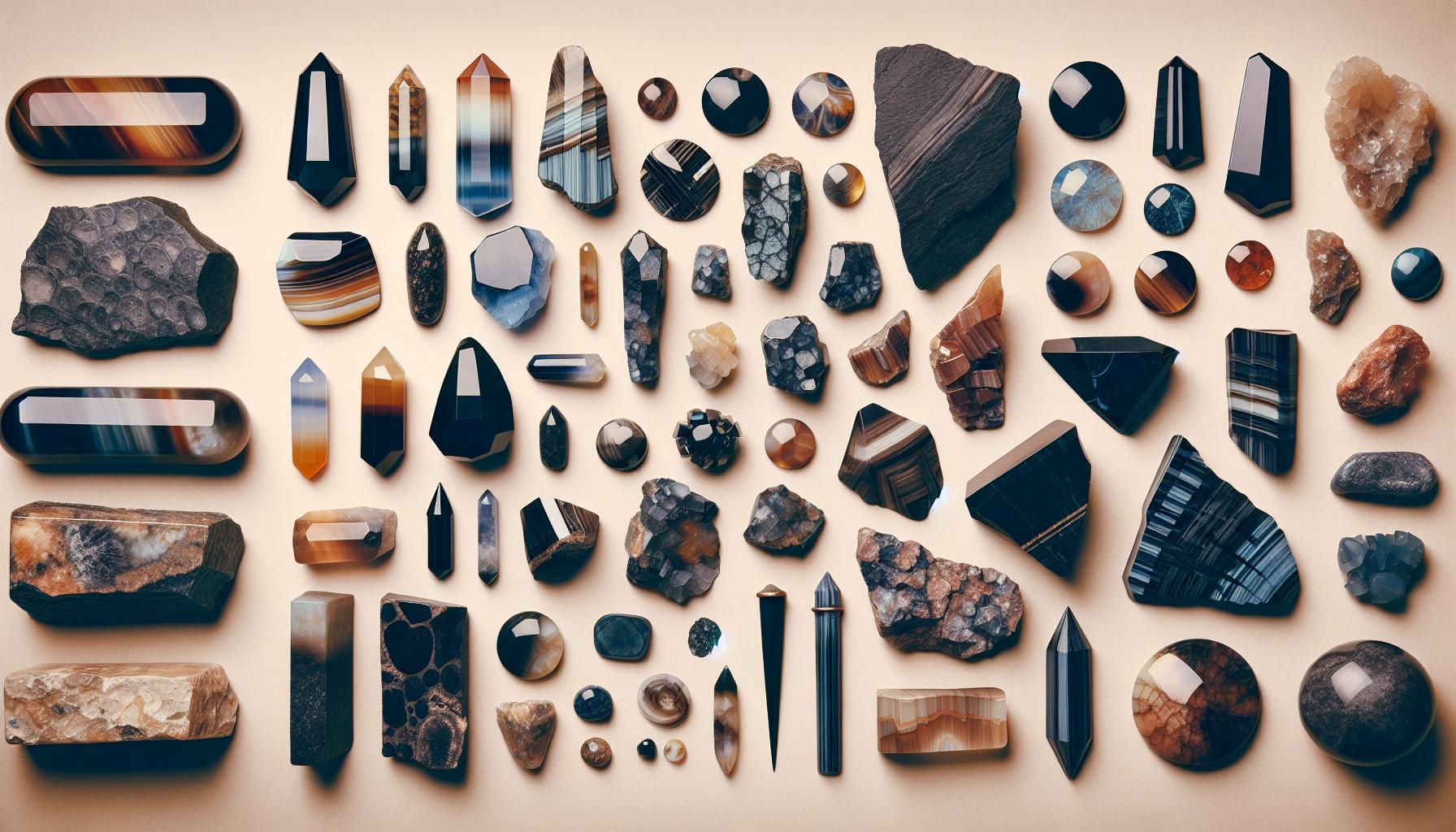
Color, Clarity, and Cut Quality
When you’re looking to purchase obsidian, it’s crucial to understand that its worth is significantly influenced by its physical attributes. Color, for one, dramatically sways the value; black obsidian is plentiful, but if you’re eyeing a piece with the sheen of rainbow obsidian, prepare to shell out more. Clarity also plays a pivotal role, with transparent samples fetching higher prices than those with cloudiness or impurities.
Cut quality is yet another factor to consider. Properly cut obsidian will showcase its natural beauty and unique characteristics, making it desirable for jewelry and decorative items. Masterfully executed facets can enhance the stone’s appeal and reflect light beautifully, raising its overall worth.
Market Demand and Availability
The intricate dance between Market Demand and Availability can cause obsidian prices to fluctuate. Here’s what you need to know:
- High-quality obsidian in unique forms is coveted by collectors and enthusiasts, boosting its market price.
- The accessibility of certain types of obsidian plays a role; rarities like Apache tears and fire obsidian are priced higher due to their scarcity.
The more desirable the type and the less there is available, the more you can expect to pay. Keep in mind that trends in the gemstone and spiritual communities can also inflate prices, as specific varieties of obsidian might become more sought after due to new age practices or fashion demands.
Remember, when you’re in the market for obsidian, it’s not just the aesthetics you’re investing in; you’re also buying a piece of the Earth’s geological narrative. Whether for its beauty or its cultural resonance, each piece holds a value that’s both material and historical.
Understanding Obsidian: A Rare Gem
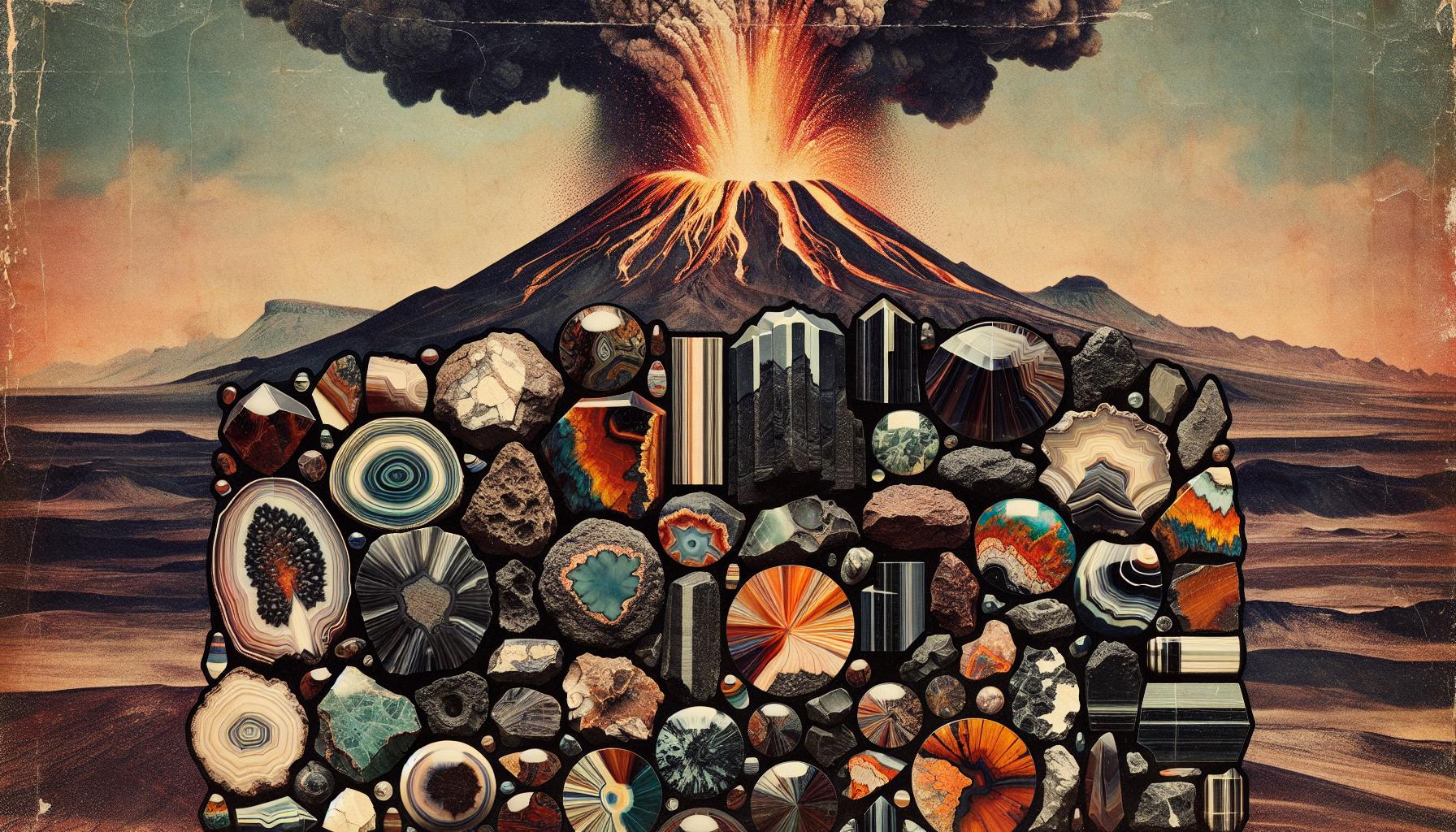
The Rarity of Obsidian
You might not realize it, but the obsidian you’re interested in is more exceptional than you might think. One of the reasons it’s so prized is its rarity. Unlike more common minerals, obsidian is formed from the rapid cooling of felsic lava. This process, usually taking place at the very edges of a volcanic dome or in lava flows, doesn’t happen everywhere, making the presence of obsidian rather scarce.
- The conditions must be just right for obsidian to form
- It’s found in only a few places around the world, like the Americas, the Mediterranean, and certain parts of Africa
What makes obsidian even rarer is the variety of colors and types that can occur due to different impurities and formation processes. The presence of iron and magnesium can give obsidian a dark, rich hue, whereas the inclusion of gas bubbles can lead to a captivating golden sheen.
Origins and Characteristics
When talking about the worth of obsidian, understanding its origins and characteristics is crucial. Obsidian isn’t just any volcanic glass; it’s formed from lava that has a high silica content, which gives it the glossy and glassy appearance you’re familiar with. This composition means that obsidian breaks with a characteristic conchoidal fracture, resulting in smooth and curving surfaces, ideal for intricate carvings and jewelry pieces.
- High silica content leads to a unique, glass-like finish
- Often displays a sharp, conchoidal fracture
The intriguing part about obsidian is that its characteristics differ depending on where it’s from, which also affects its value:
| Origin | Characteristics | Unique Features |
|---|---|---|
| Armenia | Uniform black hues | Known for healing properties |
| Mexico | Variegated colors | Site of Aztec and Mayan tools |
| Iceland | Rare snowflake patterns | Contains cristobalite inclusions |
It’s not just the obsidian’s appearance that makes it desirable; it’s also the history behind it. Obsidian artifacts have been discovered that date back to prehistoric times – imagine owning a piece of history that’s as old as human civilization itself. The allure of obsidian lies in its blend of natural beauty and the ancient stories it carries.
Obsidian Grading and Valuation
The Grading System for Obsidian
When you’re trying to figure out how much your obsidian is worth, the grading system used to evaluate the stone plays a pivotal role. Obsidian grading isn’t standardized in the way that diamonds are with the 4 Cs, but several factors are commonly considered:
- Transparency and Luster: The more transparent and lustrous the obsidian, the higher its grade.
- Color: Unique colors or vibrant patterns often increase the stone’s value.
- Size and Weight: Larger pieces can be more desirable, although in obsidian, the quality often trumps size.
- Source: Obsidian from historically significant or geologically unique regions may carry extra weight in valuation.
- Condition: Any chips, fractures, or impurities can reduce the worth of the stone.
Understanding these criteria can help you make an informed guess about where your obsidian might fall on the grading scale.
Certification and Appraisal
If you’re looking at obsidian for its collectible value or for investment, obtaining a professional certification and appraisal is crucial. This process can authenticate your obsidian and give you a better sense of its market value. Here’s what you need to know about certification and appraisal:
- Certification: This is carried out by gemological institutions. They analyze the obsidian’s physical and optical properties, providing you with documentation of its authenticity and quality.
- Appraisal: Professional appraisers give a monetary value to your stone based on the current market, considering the factors in the grading system.
It’s important to go to a reputable expert for these services. Certification and appraisal from recognized authorities can greatly enhance the credibility and resale value of your obsidian. So whether you’ve got a stunning piece of rainbow obsidian or a sleek black shard, understanding and leveraging its grade and certification might help you unlock its hidden worth.
Current Market Trends in Obsidian Pricing
Understanding current market trends is essential when you’re trying to gauge how much your obsidian might be worth. In recent years, obsidian prices have fluctuated based on various factors, including fashion trends, technological uses, and geographic availability.
A key driver in obsidian pricing has been its popularity in jewelry. Gem-quality pieces that can be cut into beads or cabochons command higher prices. On the fashion runway, obsidian has been spotted as a statement piece, which typically causes a spike in demand.
Here’s what you need to know about the types of obsidian that are trending:
- Rainbow Obsidian: Known for its iridescent layers, it’s a current favorite for artisans and collectors alike.
- Black Obsidian: While always in demand, the classic black variant has seen a steady market without sharp increases or dips.
- Snowflake Obsidian: With its unique patterns, this type is sought after for avant-garde designs.
Technological advancements have also played a part in obsidian pricing. As a natural glass, obsidian has uses in certain medical instruments and sharp blades where precision is critical. This functional demand can drive up the price, especially for high-quality material.
When looking at geographic factors, remember that the rarity of obsidian from certain locales can affect its worth. For instance, obsidian from areas like Armenia or Yellowstone park in the US can be more valuable due to their unique characteristics and the limited availability.
The table below breaks down average price ranges for different grades of obsidian:
| Quality | Average Price per Carat (USD) |
|---|---|
| Low-grade | $0.50 – $2.00 |
| Medium-grade | $2.00 – $10.00 |
| Gem-quality | $10.00 – $40.00 |
Prices can soar even higher for specimens with exceptional aesthetic appeal or historical significance. As with any gemstone, the final price point also depends on the seller’s reputation and the buyer’s willingness to pay for perceived value.
Keep in mind that these figures are subject to change as market conditions evolve, and ensuring you’re informed will help you understand and potentially maximize your obsidian’s value.
The Most Expensive Obsidian
When delving into the world of obsidian, rarity and uniqueness often drive the price skyward. Among the most expensive obsidian pieces are those with striking visual features or historical context that sets them apart. For example, Snowflake Obsidian, with its distinctive pattern of white “snowflakes” scattered across a black background, can fetch higher prices due to its decorative appeal.
Mahogany Obsidian, with its reddish-brown streaks resembling the grains of mahogany wood, also commands attention on the market. This type often finds a niche with collectors and connoisseurs who prize its unique appearance and the warmth it exudes.
The place of origin can dramatically affect an obsidian’s value. Stones sourced from unexpected or remote locations can intrigue buyers. If you’ve got obsidian from a renowned quarry known for its premium quality, you’re holding a little treasure that could be worth considerably more.
- Snowflake Obsidian
- Mahogany Obsidian
- Origin-Specific Varieties
Some obsidian pieces have been part of archaeological finds, giving them both a cultural and historical cachet that merely functional or decorative pieces lack. Owning a fragment of history often has an allure for many, with the cost reflecting the artifact’s significance and age. These obsidian pieces often come with certification and detailed provenance, assuring you of their authenticity and adding to their overall worth.
With advances in technology, the use of obsidian in precise cutting tools has also highlighted another dimension of value. Surgical obsidian blades, for example, because of their superior sharpness and cutting ability, have become highly sought after in medical fields, pushing their prices up.
Keep an eye out for exotic variations such as Rainbow or Fire Obsidian. Their iridescent qualities make them favorites for high-end jewelry and artwork, which means you’ll likely see them tagged with premium prices.
Remember, the worth of obsidian varies widely, and the most expensive varieties represent exceptional cases. Rarity, beauty, history, and practical use all contribute to creating these costly obsidian selections. Whether you’re considering investment, collection, or personal enjoyment, know that the value of obsidian goes beyond the mere physical—it’s an intersection of nature’s wonder and human appreciation.
Buying Obsidian: Tips and Recommendations
When seeking to add obsidian to your collection, knowing where to purchase high-quality stones is paramount.
Where to Purchase High-Quality Obsidian
To acquire the finest obsidian, gem shows and specialty gemstone stores are your best bet. These venues often provide an opportunity to view and assess the stone in person. Engage with reputable dealers who have a history of providing quality gemstones. Another solid option is online marketplaces, but ensure they have credible reviews and return policies.
In addition to these options, consider the following:
- Artisan jewelers or lapidaries who specialize in volcanic stones
- Cultural artifacts stores for obsidian with historical significance
Each purchase method carries different experiences and levels of engagement with the stone before buying.
Ensuring Authenticity and Value
Certifying the authenticity and value of the obsidian you’re interested in is crucial. Here’s how you can ensure you’re getting the real deal:
- Request for certification: Ask for a gemstone certificate from a reputable gemological lab.
- Look for physical imperfections: While seemingly counterintuitive, natural obsidian will often have slight imperfections – which can authenticate its natural origin.
- Educate yourself on obsidian: Knowledge is power. Understanding the types of obsidian and their typical market value aids in making informed choices.
Always remember that obsidian’s value goes beyond the monetary aspect. Its historical and cultural significance, along with its unique aesthetic, contribute to its real worth. Keep in mind that while obsidian may not have a standardized grading system like diamonds, its appeal and value remain subject to personal appreciation and market demand.
Conclusion: Buying & Selling Obsidian
Understanding the worth of obsidian means looking beyond just its price tag.
You’ve learned that its value is influenced by various factors like transparency, color, and origin. Remember, professional certification and appraisal are key in determining its true market value. When you’re ready to buy, choose reputable sources whether you’re at a gem show, a specialty store, or online. Always seek out gemstone certificates to verify authenticity. Ultimately, obsidian holds a value that transcends economics—it’s a stone with rich historical resonance, a unique beauty, and a personal significance that can’t be quantified.
Trust in the knowledge you’ve gained to make informed decisions about your obsidian investments and cherish the timeless allure that this volcanic glass offers.

